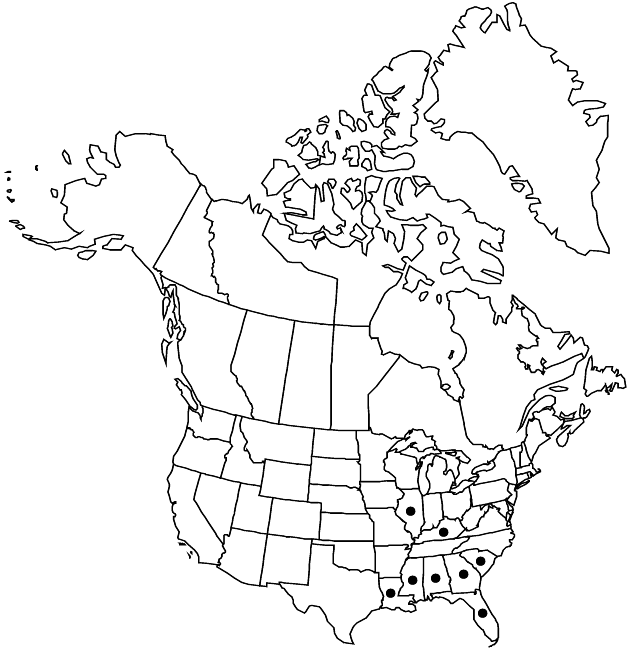Melanthera nivea
Fl. S.E. U.S., 1251, 1340. 1903.
Plants 50–220 cm. Stems usually erect, sometimes sprawling or scandent, usually scabro-hispid, sometimes glabrescent. Leaf-blades usually ovate, sometimes deltate or 3-lobed, rarely lance-elliptic, 5–12 × 3–8 cm (often triplinerved), bases truncate to cuneate, margins crenate to serrate (often irregularly), faces usually strigose to hispid, sometimes glabrescent. Heads borne in axils of reduced distal leaves (sometimes forming loose, corymbiform arrays). Peduncles 5–14 cm, hispid to strigose. Involucres 12–20 mm diam. Phyllaries broadly ovate to lanceolate, 3–10 × 3–4 mm. Paleae 4–7 × 1.5–2.5 mm, apical mucros 0.5–1.4+ mm, usually recurved. Florets 30–100+; corollas 5–10 mm; anther sacs 2+ mm. Cypselae 2–3 × 1–2 mm. 2n = 30.
Phenology: Flowering year-round.
Habitat: Moist forests, forest borders, strands
Elevation: 0–10(–200) m
Distribution

Ala., Fla., Ga., Ill., Ky., La., Miss., S.C., Mexico, West Indies, Central America, South America
Discussion
In the flora area, most populations of Melanthera nivea occur along the Atlantic and Gulf coastal plains; populations are also known from southern Illinois and Kentucky.
Melanthera nivea ranges widely geographically and varies ecologically and morphologically. Apparent ecogeographic races or ecotypes are often distinct; I have delimited them taxonomically (J. C. Parks 1973). I took the northern, erect, forest-dwelling plants with sulcate, purple-mottled stems, hastate leaves, and lanceolate, long-acuminate, recurved phyllaries and paleae to be M. nivea in the restricted sense. I referred sprawling, bushlike, highly scabrous plants with moderately long phyllaries and paleae from open, weedy habitats to M. aspera var. aspera. A strand form from the West Indies and southern Florida, called M. aspera var. glabriuscula (Kuntze) J. C. Parks, was distinguished by its less hispid, deltate leaves, ovate, obtuse phyllaries, paleae with apical mucros only slightly longer than unopened disc florets, and cypselae frequently obovate with relatively numerous short hairs on the apex rather than obpyramidal with relatively few hairs on a truncate-concave apex. Field observations by floristic botanists have yielded plants of intermediate morphology. Healthy F1 offspring were recovered from 88 genetic crosses among elements of M. nivea in the broad sense (i.e., including M. aspera; unpubl.). On the basis of results from crosses and field observations, I concluded that it is better taxonomically to treat the ecotypes as variants of one wide-ranging, morphologically variable, possibly diverging species.
Selected References
None.
Lower Taxa
"broader" is not a number.
